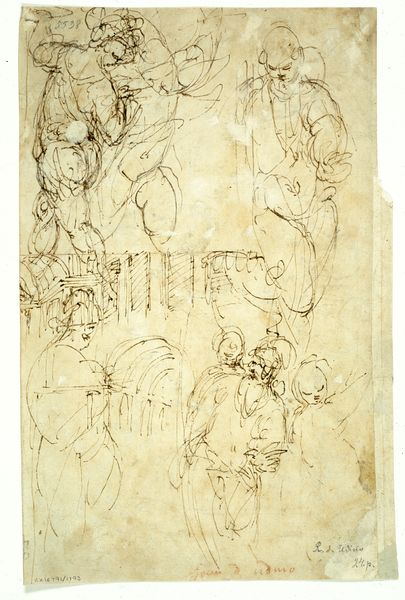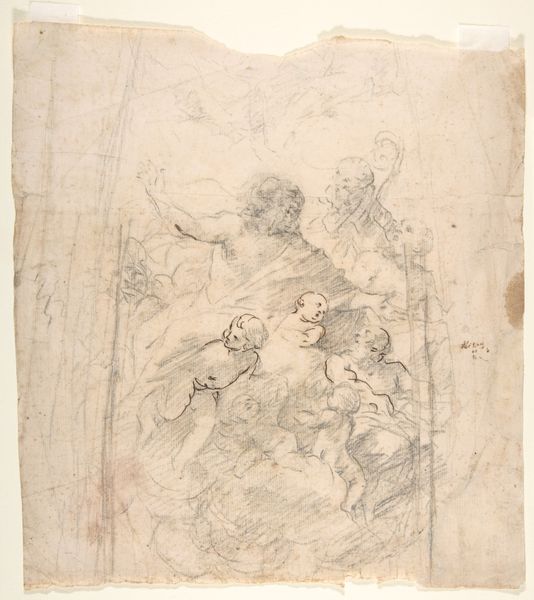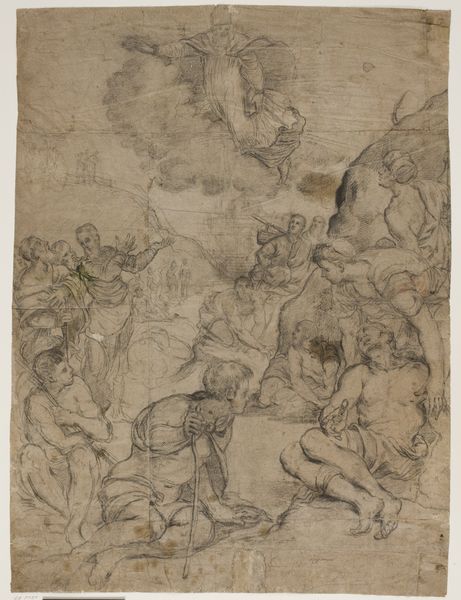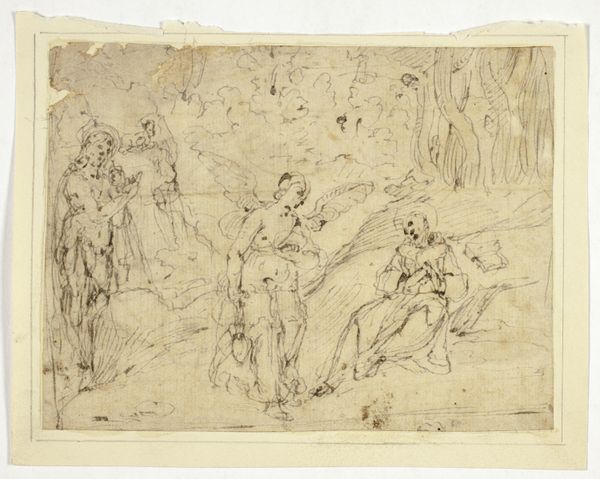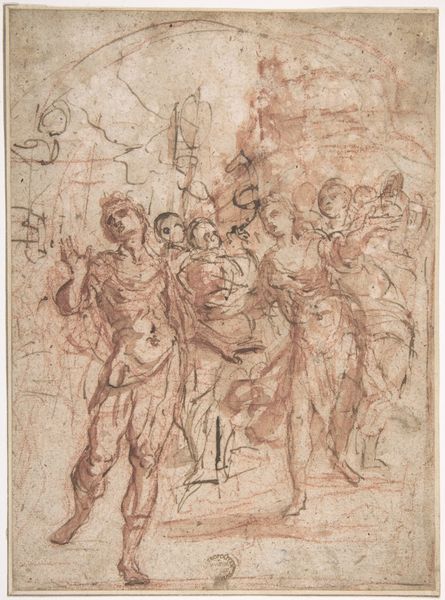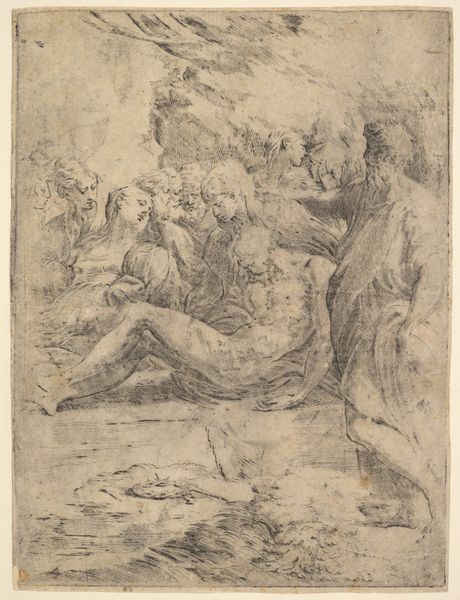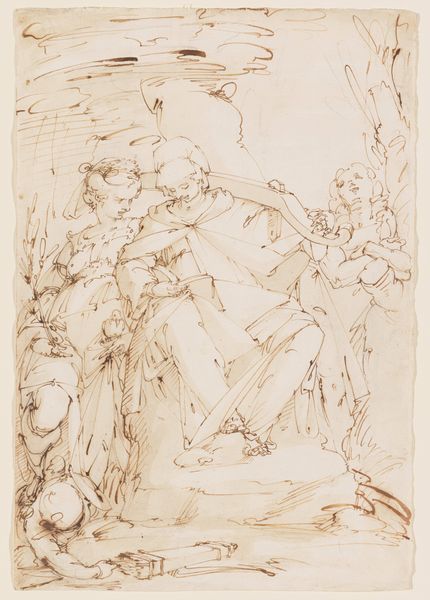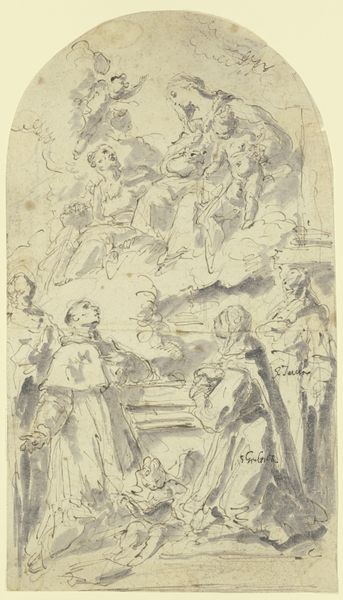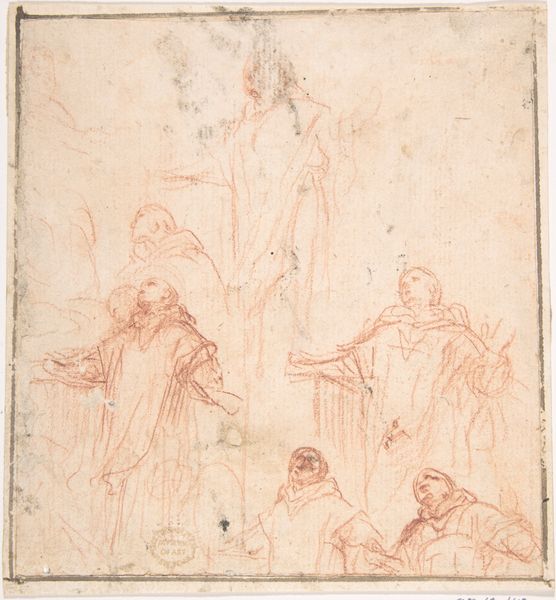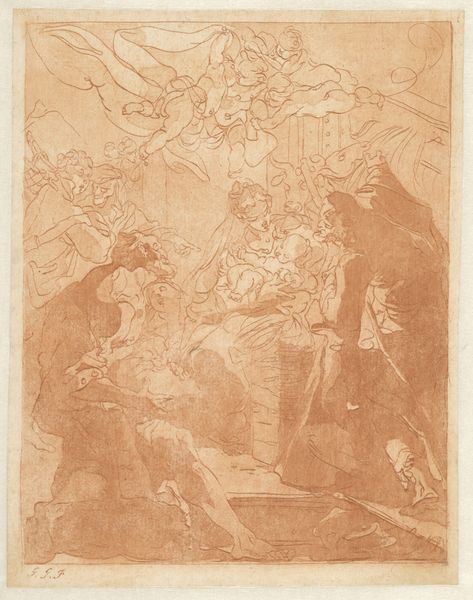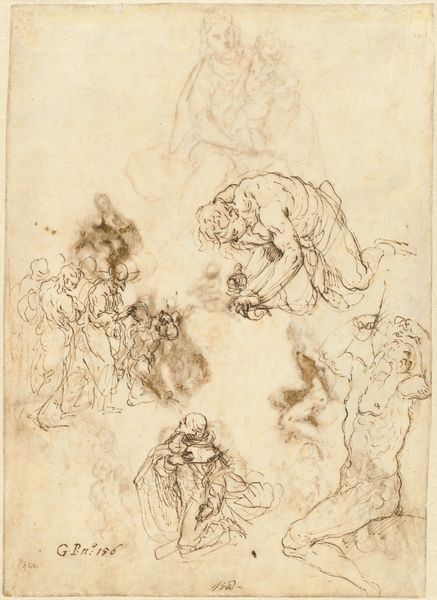
drawing, print, paper, ink, pen
#
portrait
#
drawing
# print
#
figuration
#
paper
#
ink
#
pen
Dimensions: 240 × 180 mm
Copyright: Public Domain
Curator: Let's consider this drawing by Pieter de Molijn titled "Sketches of Figures and Heads." It is undated but currently resides here at the Art Institute of Chicago. Executed with pen and ink on paper, it's a fascinating example of the artist's preparatory work. Editor: Immediately, I’m struck by its dynamic energy. There’s an incredible sense of movement, despite the stillness of the medium. The composition feels almost chaotic, yet somehow balanced. Curator: You’ve touched on a key aspect. Molijn, active in the 17th century, was very influential in landscape painting, however this sheet showcases a figure practice we can see that even in his approach to landscape he understood anatomy and how people moved within those landscapes. He likely used works like this to prepare paintings in his workshop. Editor: I’m intrigued by the recurring figures. There's one particular nude figure rendered multiple times, in different poses and at different scales. What might this emphasis reveal about artistic representations of the human form during this time? Curator: In terms of broader context, it is important to consider academies were central at this time and students often practiced the figure by repeating these kind of motifs. Each of them has a somewhat academic quality; it speaks to a deliberate exercise, focused on honing his technical skills but they also served a social purpose in demonstrating this mastery. Editor: Looking at this through the lens of contemporary theory, I see a potential critique of idealized bodies that permeate art history, although it wasn't necessarily intended as that during the time. The fragmented presentation of bodies allows me to see each of these bodies as incomplete studies of a human form and it is only in its variety that its beauty appears. Curator: Absolutely and the fact that these exist on the same plane speaks to the function of workshops at this time in which such experimentation was the only possibility. This lack of specialization has broader implications for social hierarchies and economic class because as workshops shifted to more business minded efforts in some locations around Europe we see more standardization. Editor: Right, it speaks volumes about accessibility and distribution as a whole. It’s so interesting to situate "Sketches of Figures and Heads" within a history of artistic production and larger socio-economic discussions that occurred at that time and have influence even in contemporary culture. Curator: Exactly, and understanding the public role and reception of an artwork depends on precisely these kinds of multilayered considerations. Editor: Definitely. It reminds us that our experience of an artwork is never static. We, too, evolve as viewers encountering art across history.
Comments
No comments
Be the first to comment and join the conversation on the ultimate creative platform.


